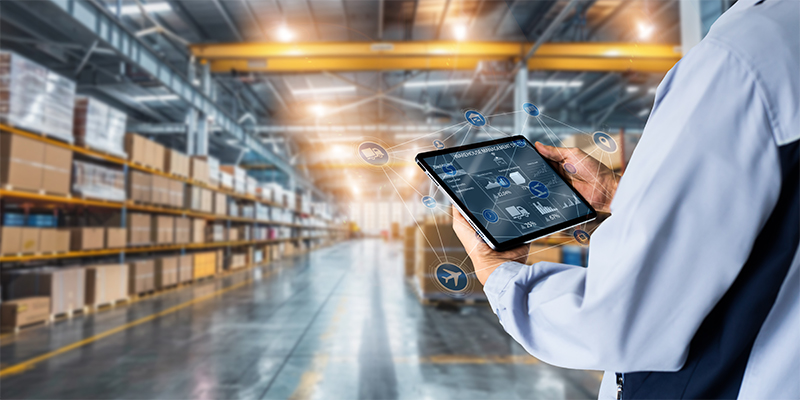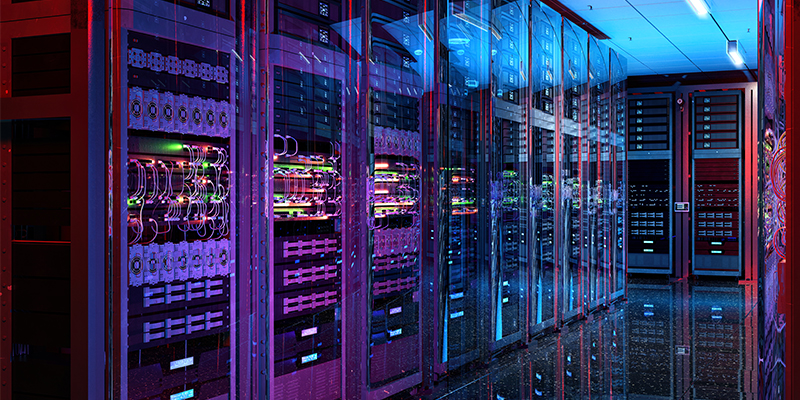By Nick Fryer
In late 2023, KPMG predicted that at least 50% of supply chain organizations would invest in artificial intelligence and advanced analytics technology by the end of 2024. The technology has boomed across the industry with retail giants like Walmart and Amazon leading the charge. Real-time data tracking is becoming foundational to logistics networks, but even so, many warehouse systems are lagging.
It’s not just advanced technology they’re missing out on, but the benefits that come with it. Key technologies are driving visibility and added value in warehouses and beyond.
Why Real-time Visibility Enhances Warehouse Value
Before exploring the ins and outs of the technology that makes real-time visibility possible, it’s worth defining the advantages that visibility offers warehouses in the first place:
- Better Inventory Management: Devices that track inventory in real time make it easier to locate assets quickly, reduce theft risks and manage replenishment. When inventory is more visible, the delays of lost goods or having to manually count items become worries of the past. Warehouses are able to operate faster and more efficiently.
- Quicker Decisions: Centralized, accurate data also allows for quicker decision-making. There’s less back and forth to check inventory numbers, and teams aren’t left waiting for updated information.
- Happier Customers: Logistics optimization is at its best when it’s not just improving activity on the warehouse floor, but improving the customer experience as well. Real-time visibility enhances warehouse value by ensuring that teams can proactively communicate with customers about what’s in stock, when shipments are out for delivery and when shipments may be delayed. They’re able to share more accurate information with customers, which ultimately boosts trust.
The improved fulfillment systems that real-time visibility allows also help meet customer demands. Some research even suggests that ultrafast deliveries – which need visibility to happen – can encourage increased spending from customers. - More Efficient Task Prioritization: Another aspect of visibility that contributes to quicker fulfillment is that it guides task prioritization. The data allows warehouse teams a true overview of everything that’s occurring so that they can see exactly what needs attention first.
- Data for Predictive Analytics: Data collected by technology for real-time visibility gains even more value over time. It can be fed into predictive analytics platforms to provide forecasting on market demands, inventory patterns, etc., which ultimately assist in making warehouses even more efficient.
At the heart of real-time visibility in warehouses is readiness. Teams are more ready to fulfill orders quickly and meet customer demand. This is what enhances warehouse value and ensures greater asset value as well.
Seeing the Full Supply Chain: Visibility Beyond the Dock Door
Real-time visibility need not end at the dock door. True supply chain visibility is achieved when every aspect of the network is tracked and monitored. It’s why warehouse visibility should ideally be integrated with the rest of the supply chain. That way, every aspect is both trackable and easier to optimize.
Warehouse teams can better see when suppliers might be delayed and adjust their inventory planning accordingly. They can also track delivery pick-ups and ensure that fulfillment teams are logistics ready. All these seemingly small adjustments add up to create a supply chain that is more streamlined and successful.
Key Technologies Driving Warehouse Readiness
Warehouse visibility has come a long way since clipboards and spreadsheets. Here are the key technologies driving warehouse readiness today:
- Warehouse Management Systems: This software operates as a centralized portal through which all warehouse data and decisions can flow. They can be used to track inventory and shipping, and integrate with your Transportation Management System (TMS) and Enterprise Resource Planning (ERP) for full supply chain visibility. It’s important, though, that the use of this technology be supported with adequate cybersecurity for total risk management.
- IoT and RFID: Tracking technology is foundational to real-time visibility. It’s also what drives readiness in warehouses as it ensures that no piece of inventory goes unmonitored. RFID – wireless technology that uses radio waves to identify and track objects using a tag and reader – is highly effective at automating inventory counting as goods move in and out of warehouses, while the Internet of Things – smart devices and sensors – is most useful for tracking locations. The latter makes picking orders much quicker. IoT can also be used to track environmental factors such as temperature and humidity, ensuring that product quality is protected as well.
- AI-powered Analytics: AI is often cited as one of the most important technologies for end-to-end visibility. AI-powered algorithms can automate alerts, inventory ordering and task prioritization for more efficiency. Ultimately, it empowers business leaders to make sense of all the data that is generated through enhanced visibility.
Building for Visibility: Design Essentials in Modern Industrial Facilities
Technical advancements in warehouse operations require the support of smart design in order to operate fully. Intelligence needs to be built into every facet – the most important of which is proper connectivity and cyber infrastructure to support IoT sensor networks, which ensures uninterrupted, real-time data flows and full visibility at all times.
Warehouses also need to be designed with physical space in mind for digitized zones such as RFID portals. Digital signage and dashboards are another essential. Building these into warehouse designs from the beginning makes it easier to position them as part of workflows rather than cumbersome add-ons.
Operational Intelligence as a Market Differentiator
AI technology has been proven to increase supply chain efficiency. There are many ways operational intelligence can improve fundamental aspects of warehousing and logistics.
The reason AI is a market differentiator is not because flashy technology makes businesses more impressive. It’s because many of the advanced tools available make supply chains and warehouses more resilient in the face of market shifts. As industries across the globe battle trade wars, geopolitical issues, fuel hikes and shifting consumer demands, operational intelligence offers a smarter way through the chaos.







